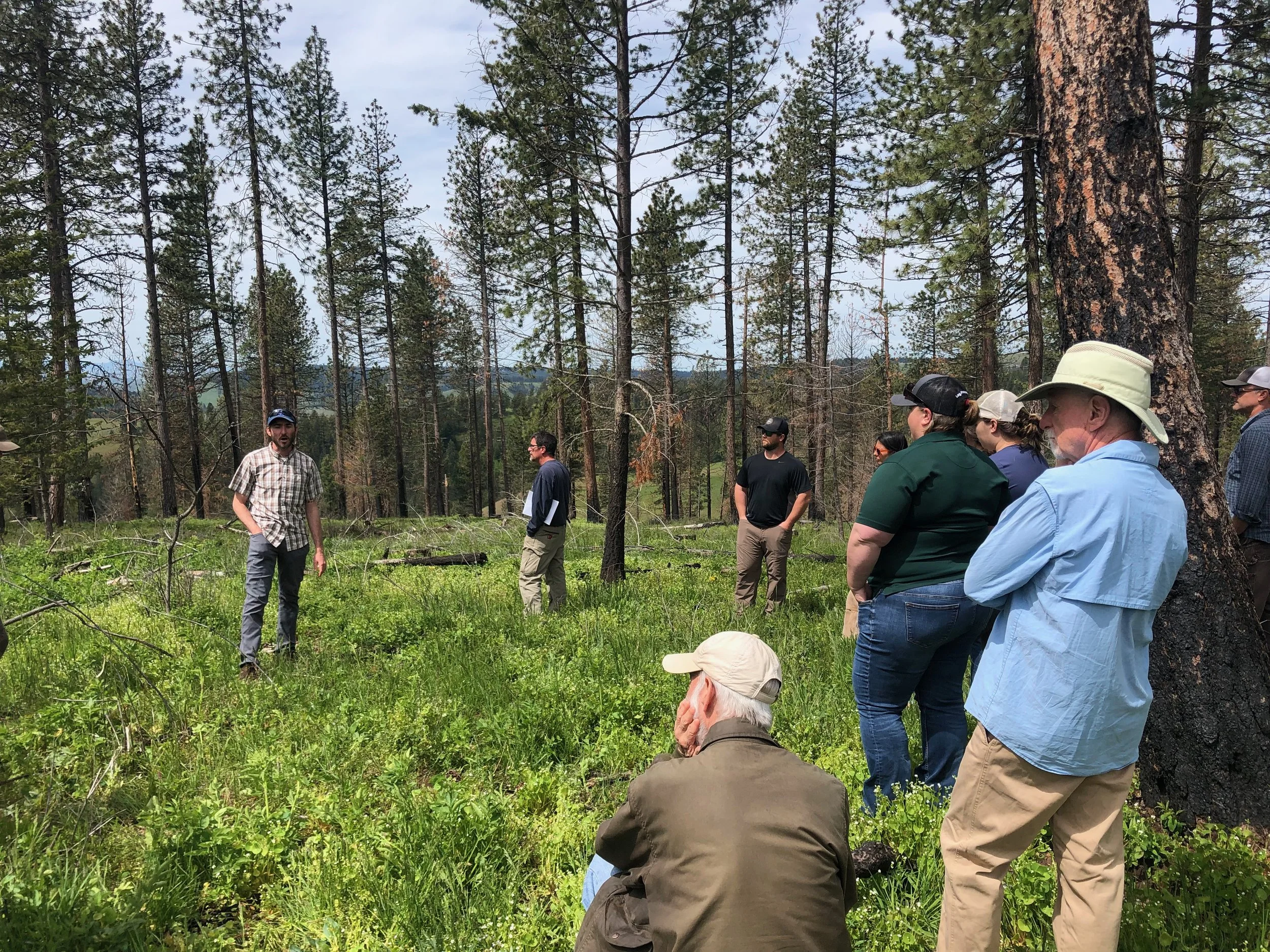By Emery Cowan, RVCC Program Manager
Emery was the lead author on both of the RVCC learning resources described below, but had help from many Forest Service staff, collaborative group partners, and RVCC colleagues.
The work of collaborative groups and partnerships have always been central to RVCC’s focus on solutions that benefit the health of both rural landscapes and rural communities. RVCC staff are fortunate to work closely with collaborative groups across the West and to develop learning resources to support their work. Along the way, we’ve noticed a few trends among these groups, and forest collaboratives in particular. For one, as more collaboratively planned land management projects move into implementation, we’ve seen forest collaborative groups increasingly exploring ways to engage in the post-planning phase of the project timeline, including activities like on-the-ground project preparation and monitoring. Collaborative groups are also finding ways to bring new resources to land management activities and are contributing valuable perspectives, shared learning, and coordination capacity at a number of points along the project timeline, rather than only during project planning. In light of these trends, we’ve recently developed two companion resources to highlight and support expanded collaborative engagement in Forest Service planning and implementation.
Forest Service Project Planning to Implementation serves as a reference resource that outlines the major phases of initiating and carrying out forest management actions, including project development, environmental analysis, implementation planning and preparation, contract and agreement development, implementation, and monitoring. Our goal is to promote shared understanding of these processes, better-aligned expectations of project timelines, and more informed conversations about opportunities for collaborative engagement. Partners who are newer to working with the Forest Service may also find this guidebook a helpful primer on the agency’s processes.
Innovative Collaborative Engagement in National Forest Management in the Pacific Northwest is a companion to the guidebook and showcases examples of how collaboratives are engaging with Forest Service management actions along different parts of the project timeline. Learn how collaborative groups are supporting data collection and surveys, improving the design and offering of timber sales, and supporting monitoring efforts (among many other things!)
We have also presented these documents to forest collaboratives around the Pacific Northwest and beyond, which have sparked a number of useful conversations.
At one collaborative group, the discussion homed in on opportunities to better understand various wood products businesses in the region and use that to inform the design and financial evaluation of proposed commercial projects.
During another working session, our introduction of these documents spurred conversation about how steep topography impacted total treated acres within a project footprint and ways the collaborative could support more accurate timber appraisals.
At yet another collaborative group meeting, partners said they were surprised and grateful to better understand the reality of project implementation timelines. The discussion also sparked brainstorming about the possibility of an implementation engagement agreement between the collaborative and the Forest Service (read more about that type of agreement on p.8 of this document).
We are excited to play a small role in kickstarting shared learning and new conversations within collaborative groups. If your group or partnership would see value in an overview of these learning documents, please reach out - we’d be glad to work with you! RVCC staff can be reached at rvcc@ruralvoicescoalition.org.

